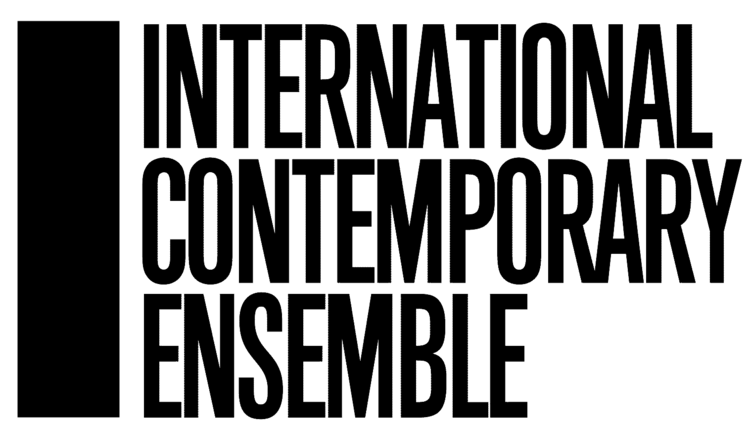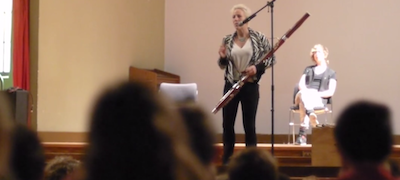by Jacob Greenberg, pianist and Education ICE Artist Partner
ICE education has been literally all over the map this fall! In a few days, I’ll post about our workshops in Morelia, Mexico during our appearance at that city’s music festival over Thanksgiving. And this weekend, ICE starts our inaugural residency with Youth Orchestra L.A., the education arm of the Los Angeles Philharmonic.
In October, ICE began a special year-long residency at the Lycée Français de Chicago, a distinguished international K-12 school in the North Lakeview neighborhood. Our first events were two all-school assemblies, introducing the students to myself, Claire, and Rebekah, and featuring lots of extended playing techniques, wild repertoire, and crowdsourced improvising.
ICE’s project at the Lycée is inspired by the great French-American composer Edgard Varèse, whose complete works ICE presented at the Lincoln Center Festival in 2010, with Sō Percussion and Steven Schick. Varèse’s pathbreaking piece Poème Électronique, written for the 1958 Brussels World’s Fair, was one of the first pieces written purely for tape, and, originally, one of the first multimedia presentations with music; it was housed in a structure designed by the great architectural firm of Le Corbusier, and supervised by the architect and composer Iannis Xenakis (another ICE favorite). During the six months of the fair, millions of people heard the piece as they walked through the structure, and were simultaneously treated to a light show with projections depicting the history of civilization.
The Poème Électronique was notable for another reason: it was notated by Varèse in a purely graphic style. (ICE presented some realizations of Varèse’s graphic scores at the Kitchen in New York a few years ago.) ICE is no stranger to teaching graphic scores; it’s the basis of our Listening Room program. The combination of electronics and non-traditional notation will influence the Lycée’s piece, which will take the form of a large-scale three-dimensional graphic score that listeners can walk through. It will use many art media, and varied performing forces: four ICE players, student players, electronic processing and spatialization effects by Levy Lorenzo, and a special programmatic theme: the Lycée’s engagement with its Chicago communities.
The workshop sessions will involve diverse ICE players over the school year. In November, Ryan Muncy joined me at the school for some improvising sessions with saxophone techniques. In two weeks, ICE violinists David Bowlin and Jen Curtis will play part of their Hideout OpenICE show for a second-grade audience, and will lead a game with voices and percussion. The classes so far have involved nearly every grade at the school, and the entire faculty has taken part, including art and music teachers. Sessions have ranged from a discussion of piano acoustics, for twelfth-grade physics classes; an introduction to ideas in contemporary music theory, for a sixth-grade math class; and guiding a middle-school literature class through the Poème, where the students created a narrative of their own for the piece. All students have learned about Varèse, who found his modern compositional voice when he left his European nest and became an adopted citizen of New York City.
The students have been great. I’ll never forget when a fourth-grader perfectly described and imitated a theremin. And a first-grader brilliantly encapsulated thePoème with this description: “It’s like a lot of different ideas all put together to make one piece of music.” A third-grader compared the score of the Varèse piece to a cardiogram. And an upper-school class had a philosophical discussion about musical notation, in which we explored how notation compares historically to other written forms of communication.
And this exchange, with a second-grader who remembered me from the school assemblies:
Student: “Are you ICE?”
Jacob: “I am ICE!”



